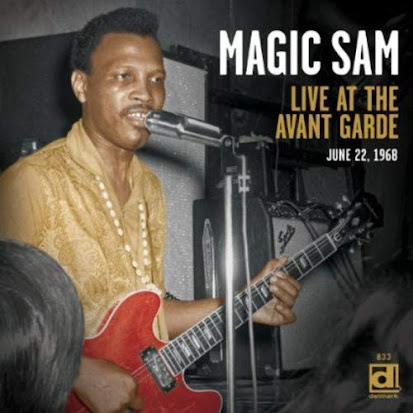And it’s back to one of my favorite program themes: jazz, blues, and R&B, mostly of the era between 1940-80. At times I feel like an anthropologist, studying the music as an outsider looking in. Growing up white, Catholic and middle class in Racine, Wisconsin prepared me little for my embrace of African American music, but through knowledgeable acquaintances and strokes of good fortune (proximity to Chicago and Milwaukee [site of such as as the Avant Garde], amongst others) it became my go-to sound. As John Lee Hooker once intoned: “If the impulse is in you, it’s got to come out.” [continued below...]
Al compás del mundo - programa #12 - Jazz, Blues and R&B
First Broadcast 5-2-24
01 Eddie Lockjaw Davis - Untitled Blues
02 Sidney Bechet - I'm Speaking My Mind
03 The James Cotton Blues Band - Somthin' You Got
04 Titus Turner - Hold Your Lovin'
05 Sonny Stitt - Me 'n You
06 Mercy Dee - Call the Asylum
07 King Curtis - Free for All
08 Duke Ellington - Blues for New Orleans
09 Magic Sam - I Have the Same Old Blues [pictured above]
10 Lee Dorsey - People, I Wish You Could See
11 Archie Shepp - Keep Your Heart Right [pictured below]
12 Roosevelt Sykes - She Ain't for Nobody
13 Lonnie Smith – Seesaw
14 Sonny Boy Williamson - Unseen Eye
15 J. B. Hutto - Speak My Mind
 |
| Whirling Archie |
[... continued] Today’s playlist brings forth a solid bunch of musical stalwarts. They don’t form a group of all-time favorites, necessarily, but fill in the blanks of any test procedure looking for honest talent and soulful statements. In choosing a playlist I feel the need to include the work of artists not recently profiled. Keep it fresh. So there’s Mercy Dee, Titus Turner, Roosevelt Sykes, Lonnie Smith, Lee Dorsey, J. B. Hutto and Magic Sam (who died age 32 of a heart attack, apropos of something). Their companions perhaps better known, but all befitting an hour’s worth of show time on Mexican radio and the world-wide web. -JH


Comments
Post a Comment